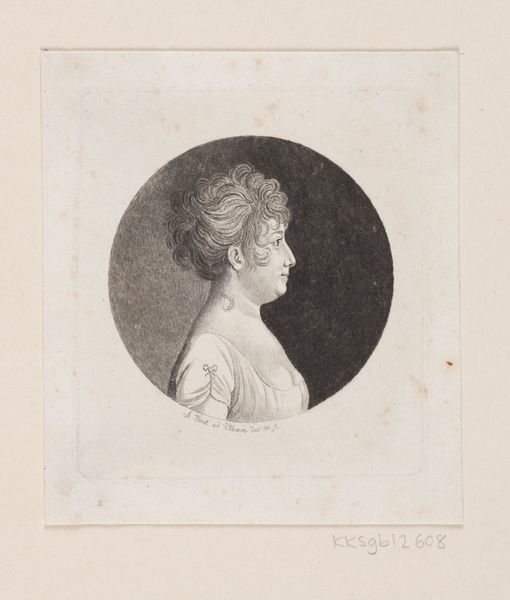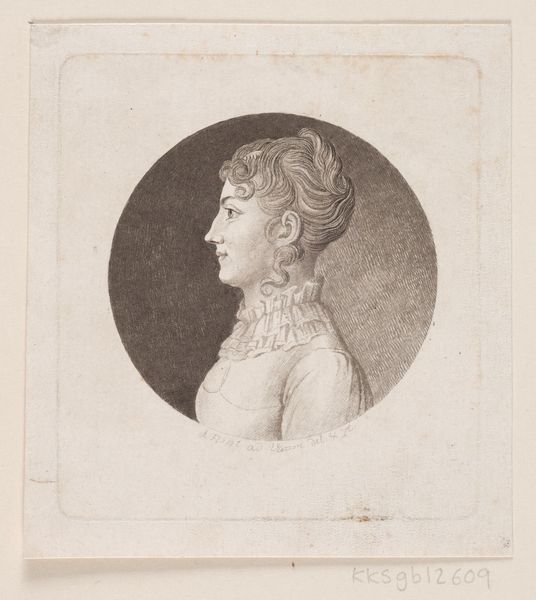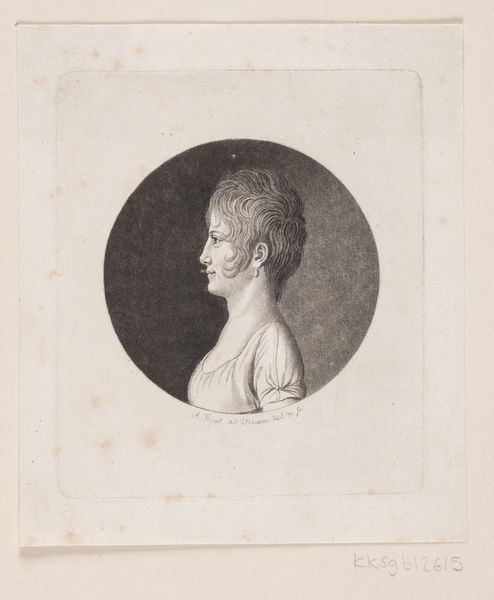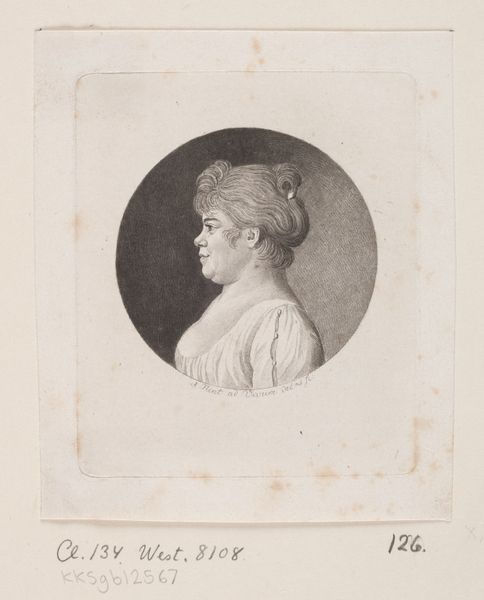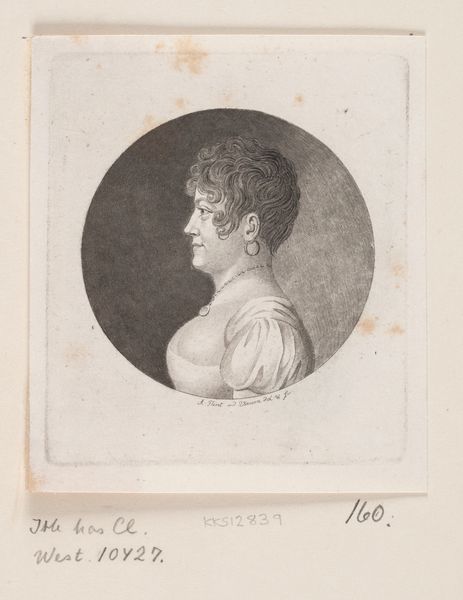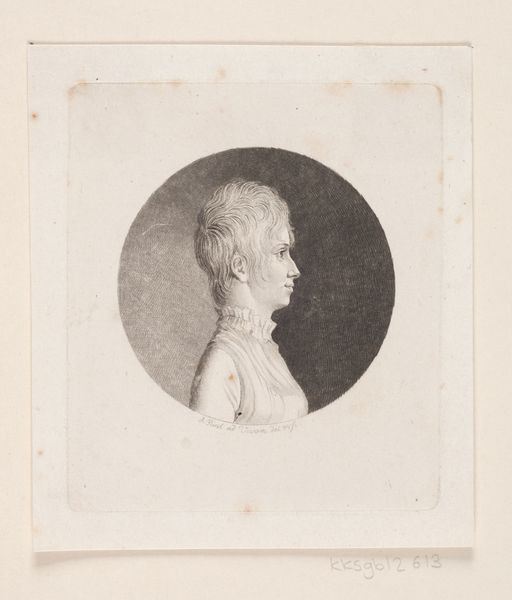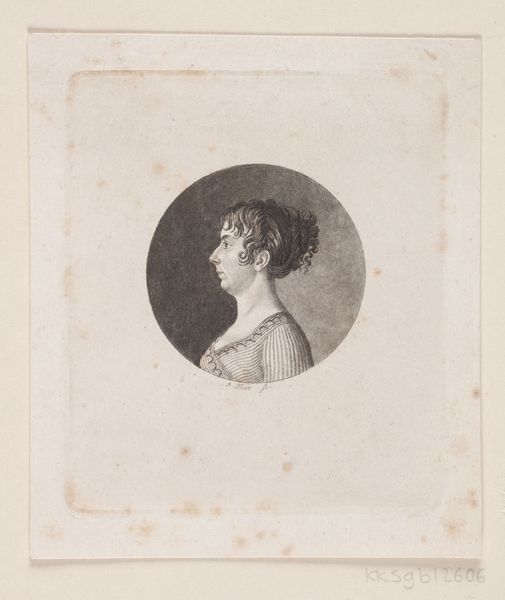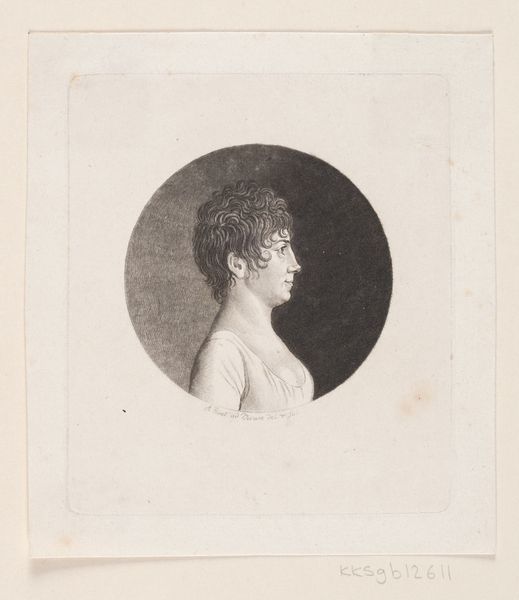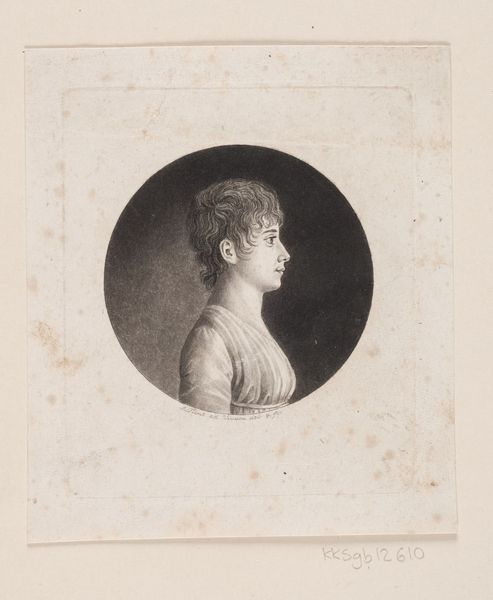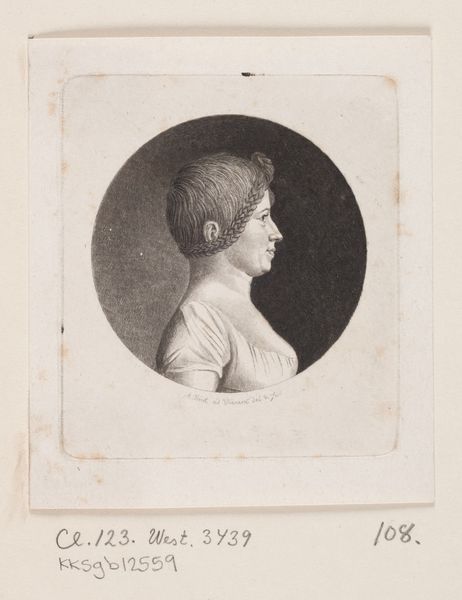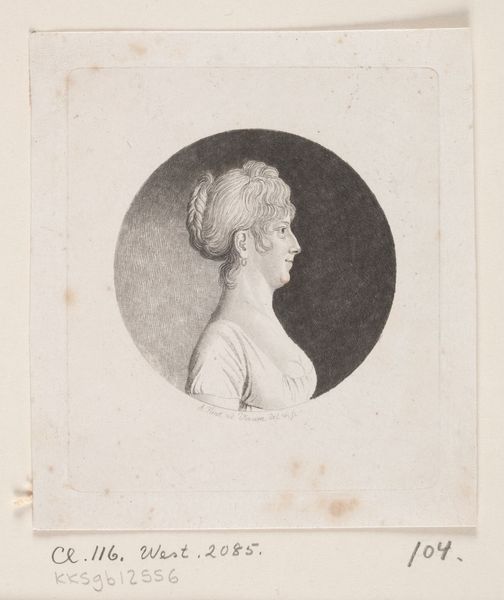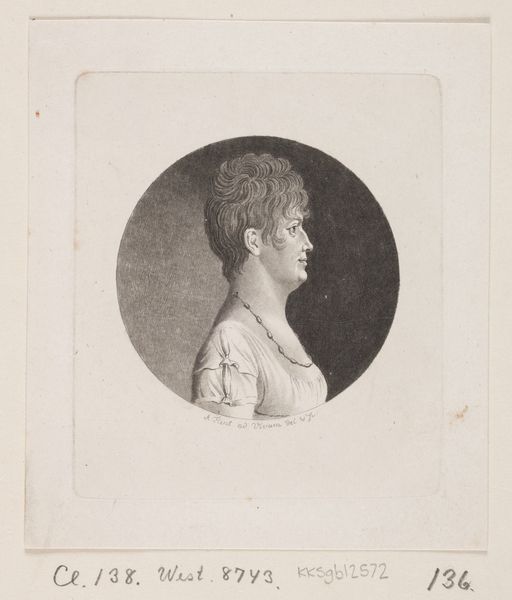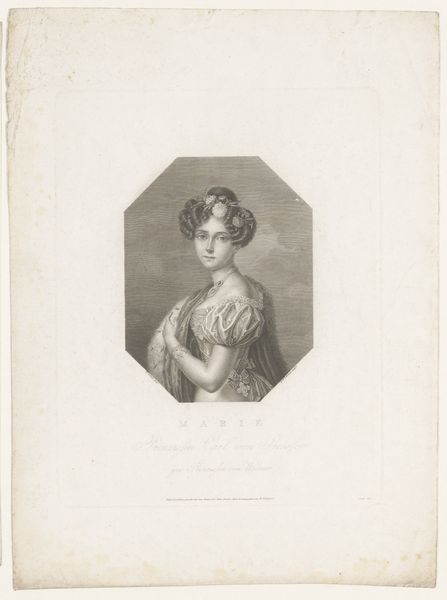
print, engraving
#
portrait
#
neoclacissism
# print
#
engraving
#
realism
Dimensions: 62 mm (None) (billedmaal), 93 mm (height) x 80 mm (width) (plademaal)
Curator: Here we have a rather understated engraving, titled "Ubekendt kvindeportræt", or Unknown Woman’s Portrait, attributed to Andreas Flint and dating sometime between 1767 and 1824. It's part of the collection at the SMK, the National Gallery of Denmark. Editor: There's something both delicate and severe about this image. The limited palette and precise lines emphasize the woman’s strong profile, and the use of the oval frame gives a sense of timelessness. It makes me want to know her story! Curator: Well, what makes it fascinating from a social perspective is that the engraving would have made portraiture accessible to a broader audience. Unlike painted portraits which would only be available to the wealthier citizens of the day, prints were comparatively affordable and easily reproduced. The printing trade exploded from the mid 1700s onwards, driven by the scientific revolution as information, illustrations and books become crucial to new areas of production and specialism, beyond art. Editor: That’s a fantastic point! We often focus on the sitter, but what about the engraver? Flint’s skill in rendering texture – look at the softness of her hair against the stark black background – it highlights the importance of artisanal labour within the Neoclassical movement, a period often viewed through the lens of grand narratives and influential characters.. Engraving demanded precision, repetition, it’s a world away from the celebrity lifestyle these days. I want to know about who commissioned him and whether he worked for anyone in particular! Curator: That touches on the socio-political function of such images too, the production of engravings like these democratized visual representation. Consider the rise of the middle class in the 18th century and the increasing desire to own images, collect objects, and perform wealth in particular ways. Prints served a crucial function by bringing artworks into homes and facilitating discussion in both political and intellectual circles. Editor: Precisely! I'm left considering not only the woman’s identity, but the broader impact this image could have had, what materials did Andreas use, the impact and skill involved to master the craft? The act of reproducing and disseminating imagery had political ramifications. Curator: So, this small portrait serves as a compelling reminder that every image exists within a larger network of social, economic, and historical forces. It also asks questions about the way class structures determined artistic expression. Editor: Absolutely, a testament to the power of art accessible enough to provoke meaningful change, right under the noses of high society, not that this was necessarily intended by its patrons! It seems humble but has more to say about those times, maybe, than a painting made at double the cost.
Comments
No comments
Be the first to comment and join the conversation on the ultimate creative platform.
